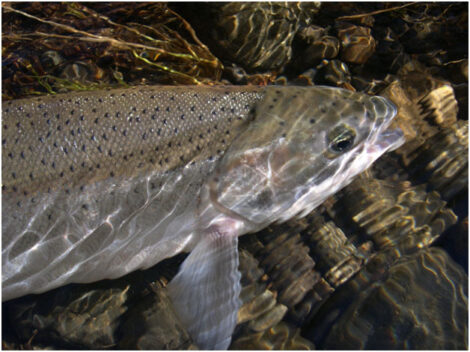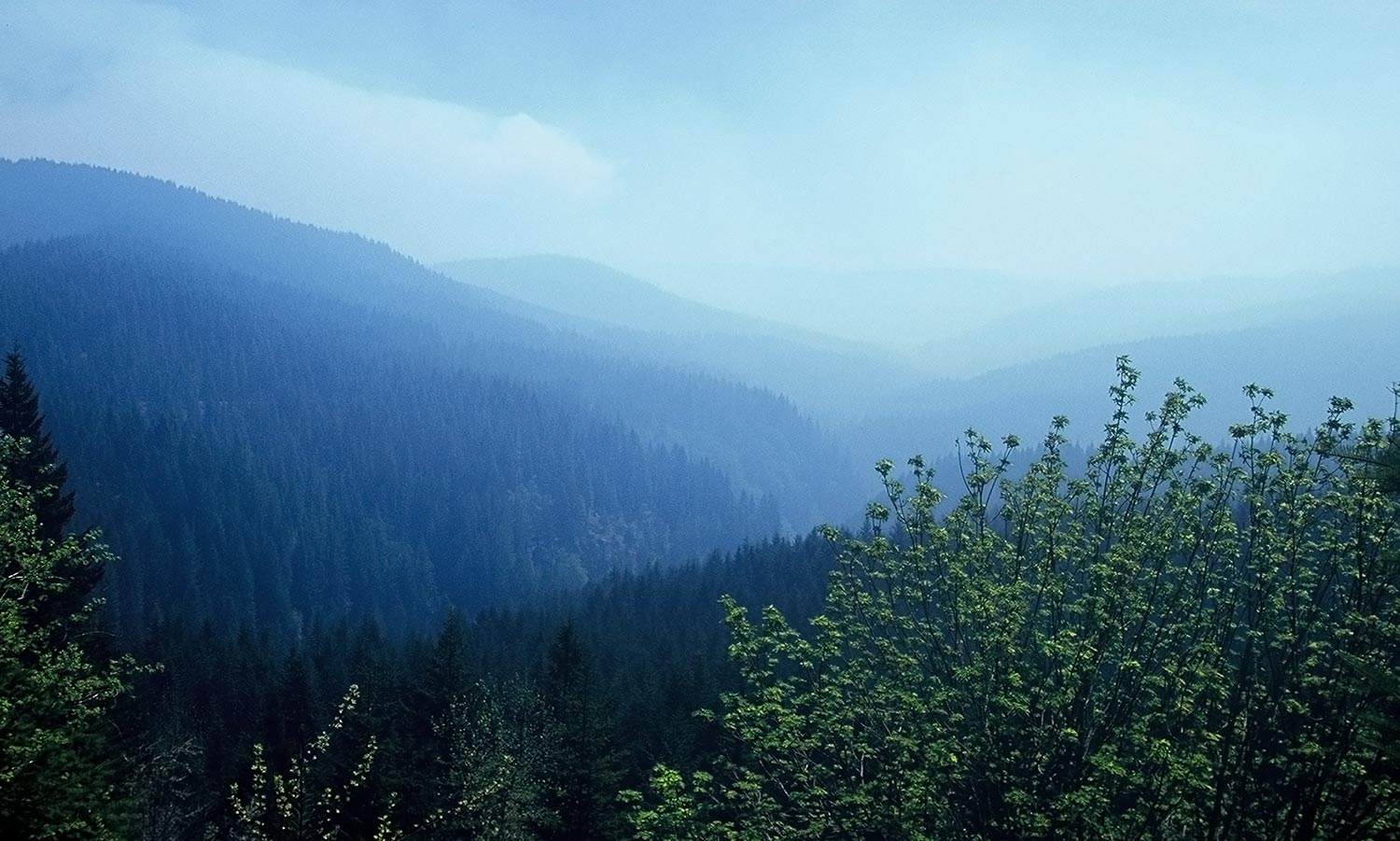Prolific volunteer for fish surveys on Oregon’s North Coast and Board member of Northwest Steelheaders.
Ian Fergusson has spent the last 18 years conducting fish surveys on Oregon’s North Coast, primarily on the Salmonberry River. He is currently on the Board of the Association of Northwest Steelheaders where he learned of WSC’s work on forest policy.
How did you get started in your work with salmon conservation?
In 1993 I joined the Oregon Trout Steelhead Committee and learned they were looking for volunteers to help with winter steelhead spawning ground surveys on the Salmonberry River, a tributary of the Nehalem River in northwest Oregon. Looking back I can see I had no idea how passionate I would become about it, nor how much of my life it would consume. Oregon Trout has moved on, but the volunteer spawning surveys are still going on. We also conduct summertime temperature monitoring, and periodic macroinvertebrate surveys.

I’m normally not one to engage politically. I much prefer wading the remote reaches of the Salmonberry, counting redds and paying attention to the health of the watershed. But it was that same attention to the watershed that led me to a deeper understanding of the connections between land use and fish habitat.
In the Salmonberry, the dominant land uses are timber harvest, and a now-defunct railroad. Two major storm events—in 1996 and 2007—dramatically pointed out the effects that both those uses can have on watershed health. In 2008, I joined the Board of the Association of Northwest Steelheaders, as they were looking for someone to help with resource and conservation issues, particularly forest management. That led to my connection with the Wild Salmon Center, where Bob Van Dyk keeps an eagle eye on forest policy and does an excellent job of reaching out and informing those of us with an interest in the issues.
Even though I am retired from a 30-year insurance career, I look at my work on behalf of fish as my true life’s work.”
– Ian Fergusson
– Ian Fergusson
Why are wild salmon important to you and your community?
Wild salmon are important at nearly any level where I would try to define “community”: they connect land and sea throughout the Pacific Rim, and in this region they are a dominant component of any view you’d care to take, whether economic, ecological, recreational, or spiritual.
On a personal level, even though I am retired from a 30-year insurance career, I look at my work on behalf of fish as my true life’s work.
What do you hope to accomplish?
Two of my short-term goals involve a single watershed: the Salmonberry River. There is a large tract of private land in the headwaters that is marginal for timber production due to steep slopes, but is nevertheless being logged and roaded. The owner has expressed an interest in selling. I’d like to work with the Board of Forestry to help the state acquire the land and make it part of the Tillamook State Forest. The other goal involves the possibility of Oregon State Parks or other public entity acquiring the right-of-way to the defunct railroad that runs most of the length of the Salmonberry. This move would take the right-of-way out of the commercial realm.

A third short-term goal is to help influence state forest management to allow the creation of conservation reserve areas, and give conservation equal weight with timber production.
Long-term, I’d like to see large areas managed to allow salmon to persist into the next century and beyond. Salmon are creatures defined by abundance, and I’d like to see obstacles removed so they have a chance to express the abundance again. I think it’s as much a matter of getting out of their way as anything else.
What challenges have you come up against along the way?
With respect to land use policies, the chief barrier is the economic argument—some interests are very adept at framing the conversation as jobs vs. the environment. They present a powerful emotional argument, particularly when jobs are scarce. Overcoming that single-minded approach calls for putting an emphasis on the economic and social values of healthy fish populations and clean water, and continually coming back to the science that connects land use practices with watershed health. It helps when we frame our position as pro-fish rather than anti-logging. We can have both strong environmental protections and forest jobs.
Regarding the work itself, conducting spawning surveys and other data collection is physically demanding work. The major challenge is finding and motivating a core group of volunteers who are willing to keep coming back year after year.
What would you say to people who are looking to volunteer?

Once the volunteers are out in the field, the fish are the best motivators. No one who has watched a pair of steelhead spawning, or jumping a 10-foot waterfall, will ever look at them the same again. We still have people participating who were part of the original group. We have a few people who first joined us last year and found it so much fun they have signed up for every survey this spring, plus the temperature monitoring and macroinvertebrate sampling.
While I’m committed to providing usable, reliable data, I’m more and more seeing this project as an opportunity to educate and create ambassadors for wild fish.
Interested in Volunteering? Contact Ian at 503-957-8875 or Ian.fergusson@comcast.net.
